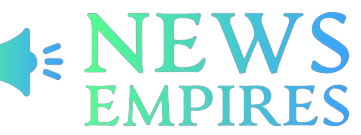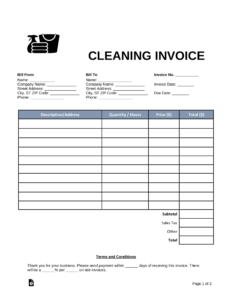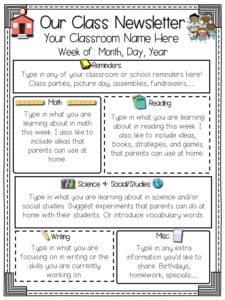As mental health professionals, therapists play a crucial role in the well-being of their clients. They provide a safe space for individuals to explore their thoughts, emotions, and experiences, helping them navigate through life’s challenges. To effectively support their clients, therapists rely on therapy note templates to document important information from each session. In this article, we will delve into the world of therapy note templates, exploring their benefits, key components, and how they can enhance the therapeutic process.
1. What are Therapy Note Templates?
Therapy note templates are standardized forms or documents that therapists use to record essential information about their clients during therapy sessions. These templates serve as a structured framework for therapists to document their observations, interventions, treatment plans, and progress notes. By using therapy note templates, therapists can ensure consistency, accuracy, and thoroughness in their documentation.
2. Benefits of Therapy Note Templates
Therapy note templates offer numerous benefits for both therapists and their clients. Let’s explore some of the key advantages:
- Standardization: Templates provide a consistent format for documentation, ensuring that therapists include all necessary information in a structured manner.
- Time-saving: With pre-designed templates, therapists can save time by not having to recreate the structure of their notes for each session.
- Improved organization: Templates help therapists stay organized by providing a clear structure for recording information, making it easier to review and track progress over time.
- Legal protection: By using therapy note templates, therapists can ensure that they meet legal and ethical requirements for documentation, reducing the risk of liability.
- Collaboration: Templates facilitate communication and collaboration among multiple therapists or healthcare professionals involved in a client’s treatment.
3. Key Components of Therapy Note Templates
While therapy note templates may vary depending on the therapist’s preferences and the specific needs of their clients, there are several key components that should be included in each template:
- Client Information: This section includes the client’s name, contact information, date of birth, and any relevant medical or personal history.
- Session Details: Therapists should document the date, time, and duration of each therapy session, as well as the location and any special circumstances that may have influenced the session.
- Presenting Issues: This section provides an overview of the client’s current concerns, symptoms, or challenges that they bring to therapy.
- Goals and Treatment Plan: Therapists should outline the goals and objectives of the therapy and document the treatment plan, including the therapeutic approach, techniques, and interventions used.
- Observations: This section allows therapists to record their observations and insights during the session, including the client’s behaviors, emotions, and verbalizations.
- Interventions: Therapists should document the specific interventions, techniques, or exercises used during the session to address the client’s concerns or promote their well-being.
- Homework or Assignments: If therapists assign homework or tasks for clients to work on between sessions, they should be documented in this section.
- Progress and Outcomes: This section tracks the client’s progress over time, including improvements, setbacks, or changes in their symptoms or well-being.
- Next Steps: Therapists should outline the next steps or goals for future sessions based on the client’s progress and treatment plan.
4. Tips for Creating Effective Therapy Note Templates
Designing a therapy note template that is both comprehensive and user-friendly can enhance the therapeutic process and improve documentation. Here are some tips to create effective therapy note templates:
- Customization: Tailor the template to fit your therapeutic approach and the specific needs of your clients. Consider including sections that are relevant to your practice or specialty.
- Simplicity: Keep the template simple and easy to understand. Avoid excessive jargon or complicated language that may confuse or overwhelm clients.
- Structured Format: Use clear headings, subheadings, and bullet points to organize information and make it easy to read and navigate.
- Flexibility: Design the template in a way that allows for flexibility and adaptability to accommodate different therapeutic styles and client needs.
- Consistency: Ensure consistency in the layout, formatting, and terminology used across all therapy note templates to maintain clarity and professionalism.
- Accessibility: Consider using electronic templates that can be easily accessed, edited, and shared across different devices and platforms.
- Regular Updates: Review and update your therapy note templates periodically to reflect changes in your practice or evolving best practices in the field.
5. Case Study: The Impact of Therapy Note Templates
To illustrate the benefits of therapy note templates, let’s explore a case study of a therapist who integrated templates into their practice:
Dr. Smith, a licensed psychologist, decided to use therapy note templates to streamline their documentation process and ensure consistency in their note-taking. By implementing therapy note templates, Dr. Smith experienced several positive outcomes:
- Improved Efficiency: Dr. Smith found that using templates saved them valuable time during and after each session. They no longer had to start from scratch when documenting their notes, which allowed them to focus more on their clients.
- Enhanced Organization: The structured format of the templates helped Dr. Smith stay organized and easily locate important information. This improved their ability to review past sessions and track the progress of their clients.
- Increased Collaboration: Dr. Smith shared their templates with other therapists in their practice, allowing for seamless collaboration and a more comprehensive understanding of their clients’ treatment.
- Legal Compliance: By using therapy note templates, Dr. Smith felt more confident in meeting legal and ethical requirements for documentation. The templates ensured that they included all necessary information and maintained a professional standard.
6. Statistics on Therapy Note Templates
Statistics can provide valuable insights into the prevalence and impact of therapy note templates. Consider the following statistics:
- According to a survey conducted by the American Psychological Association, 78% of therapists reported using therapy note templates in their practice.
- A study published in the Journal of Mental Health Counseling found that therapists who used therapy note templates reported higher levels of satisfaction with their documentation process compared to those who did not use templates.
- In a survey of 500 mental health professionals, 92% agreed that therapy note templates improved the quality and accuracy of their documentation.
7. Conclusion
Therapy note templates are valuable tools for mental health professionals, providing a standardized approach to documenting client sessions. By using therapy note templates, therapists can improve their efficiency, organization, collaboration, and legal compliance. Customizing templates to fit individual practice and client needs, while maintaining a structured and user-friendly format, can enhance the therapeutic process and ensure accurate and comprehensive documentation.
FAQs (Frequently Asked Questions)
1. Can therapy note templates be customized for different therapeutic approaches?
Yes, therapy note templates can be customized to align with different therapeutic approaches. Therapists can modify the sections and content of the templates to capture the specific information relevant to their practice.
2. Are therapy note templates suitable for electronic documentation?
Yes, therapy note templates can be easily adapted for electronic documentation. Electronic templates offer the advantage of accessibility, allowing therapists to access, edit, and share their notes across different devices and platforms.
3. Do therapy note templates comply with legal and ethical requirements?
Therapy note templates can help therapists meet legal and ethical requirements for documentation. By including essential information and maintaining a professional standard, therapists can ensure compliance and reduce the risk of liability.
4. How often should therapy note templates be updated?
Therapy note templates should be periodically reviewed and updated to reflect changes in practice or evolving best practices in the field. Regular updates ensure that the templates remain relevant and effective.
5. Can therapy note templates improve collaboration among multiple therapists?
Yes, therapy note templates can enhance collaboration among multiple therapists involved in a client’s treatment. By using standardized templates, therapists can easily share information, track progress, and ensure continuity of care.
Summary
Therapy note templates are essential tools for mental health professionals, offering numerous benefits such as standardization, time-saving, improved organization, legal protection, and enhanced collaboration. Key components of therapy note templates include client information, session details, presenting issues, goals and treatment plans, observations, interventions, homework or assignments, progress and outcomes, and next steps. By customizing therapy note templates to fit individual practice and client needs, therapists can create effective and user-friendly templates. Case studies have shown that integrating therapy note templates into practice can lead to improved efficiency, enhanced organization, increased collaboration, and legal compliance. Statistics also support the benefits of therapy note templates, with a majority of therapists using them and reporting higher satisfaction with their documentation process. Overall, therapy note templates are valuable tools that can enhance the therapeutic process and ensure accurate and comprehensive documentation.
FAQs (Frequently Asked Questions)
1. Can therapy note templates be customized for different therapeutic approaches?
Yes, therapy note templates can be customized to align with different therapeutic approaches. Therapists can modify the sections and content of the templates to capture the specific information relevant to their practice.
2. Are therapy note templates suitable for electronic documentation?
Yes, therapy note templates can be easily adapted for electronic documentation. Electronic templates offer the advantage of accessibility, allowing therapists to access, edit, and share their notes across different devices and platforms.
3. Do therapy note templates comply with legal and ethical requirements?
Therapy note templates can help therapists meet legal and ethical requirements for documentation. By including essential information and maintaining a professional standard, therapists can ensure compliance and reduce the risk of liability.
4. How often should therapy note templates be updated?
Therapy note templates should be periodically reviewed and updated to reflect changes in practice or evolving best practices in the field. Regular updates ensure that the templates remain relevant and effective.
5. Can therapy note templates improve collaboration among multiple therapists?
Yes, therapy note templates can enhance collaboration among multiple therapists involved in a client’s treatment. By using standardized templates, therapists can easily share information, track progress, and ensure continuity of care.
Summary
Therapy note templates are essential tools for mental health professionals, offering numerous benefits such as standardization, time-saving, improved organization, legal protection, and enhanced collaboration. Key components of therapy note templates include client information, session details, presenting issues, goals and treatment plans, observations, interventions, homework or assignments, progress and outcomes, and next steps. By customizing therapy note templates to fit individual practice and client needs, therapists can create effective and user-friendly templates. Case studies and statistics support the advantages of therapy note templates, highlighting their impact on efficiency, organization, collaboration, and compliance. Incorporating therapy note templates into practice can enhance the therapeutic process and ensure accurate and comprehensive documentation.





